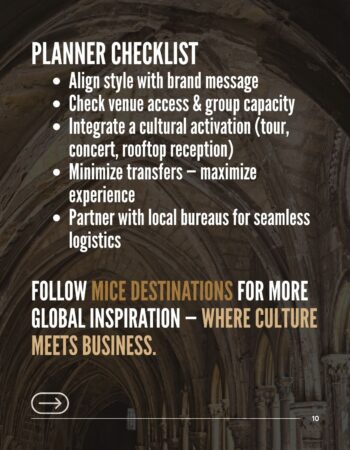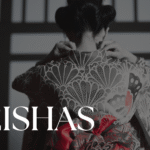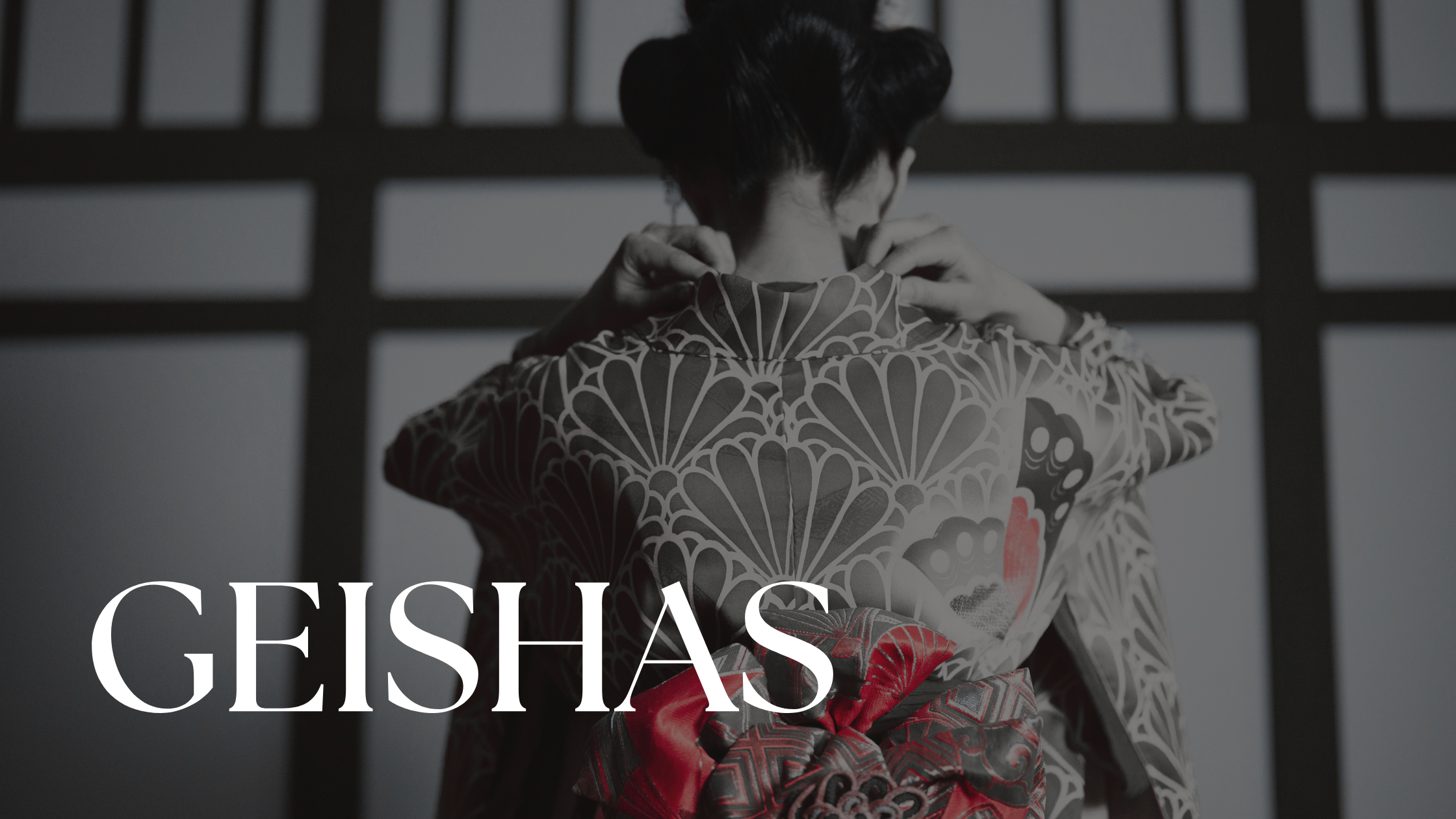
The literal meaning of the word geisha is “artist”.
Past. Tradition and codes.
Many times geisha have been singled out as “elegant prostitutes”, however they are far from it. A geisha does not sell sex. According to the legal profile provided by the government, a geisha performs as an entertainer and earns payment for this role, without offering sexual services. Japan officially recognized geisha as a profession during the second half of the 18th century. Originally, both men and women worked as geisha. Older geisha, who are over 30 years old, earn great respect due to their solid reputations. Because they have accumulated years of experience, they usually wear less makeup reserving it for special occasions to preserve their natural beauty. They also wear smaller obi, and the community holds them in high regard.
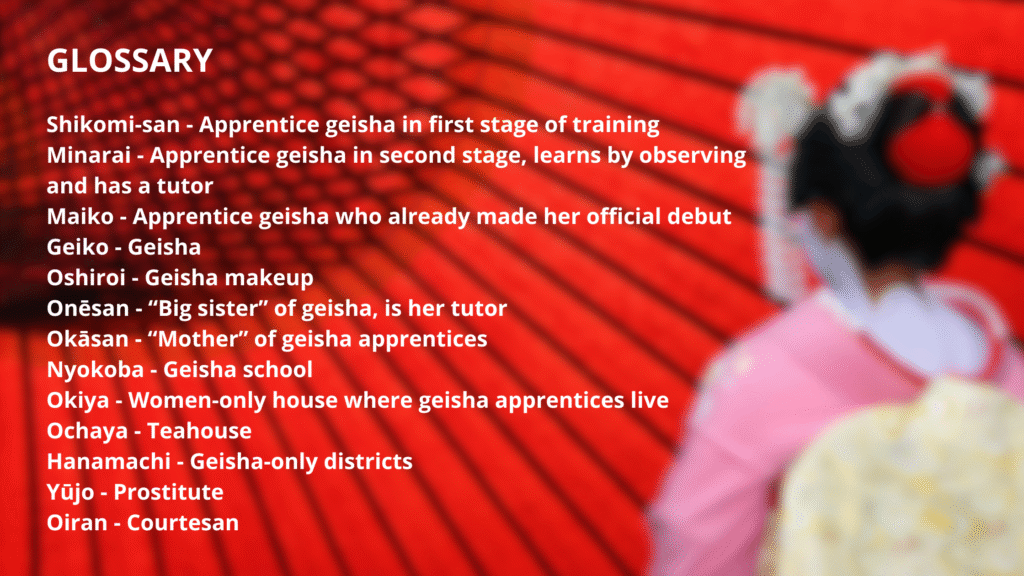
A geisha devotes her life to mastering multiple artistic disciplines at once she sings, dances with fans, and plays the shamisen, a three stringed instrument. She performs flawless tea ceremonies, creates refined flower arrangements, writes elegant calligraphy, and engages in literature and poetry. As a master of conversation, she cultivates broad knowledge across many subjects.
The older geisha, who are over 30 years old, are characterized by a great reputation. Because of their years of experience, they do not wear makeup as much, except for special occasions in order to preserve their natural beauty, their obi are smaller and they have a great respect from the community.
How Geishas Enrich Group Travel and Incentive Program
Present
In 1997 the novel Memoirs of a Geisha, by Arthur Golden, was published, and in 2005 the movie based on it was released with the same name. Golden has a fascination for Japanese culture, which led him to write this novel that give us a profile of the art involved in becoming a geisha, as well as the sacrifices and the great experiences they can go through in a lifestyle that we could hardly imagine.
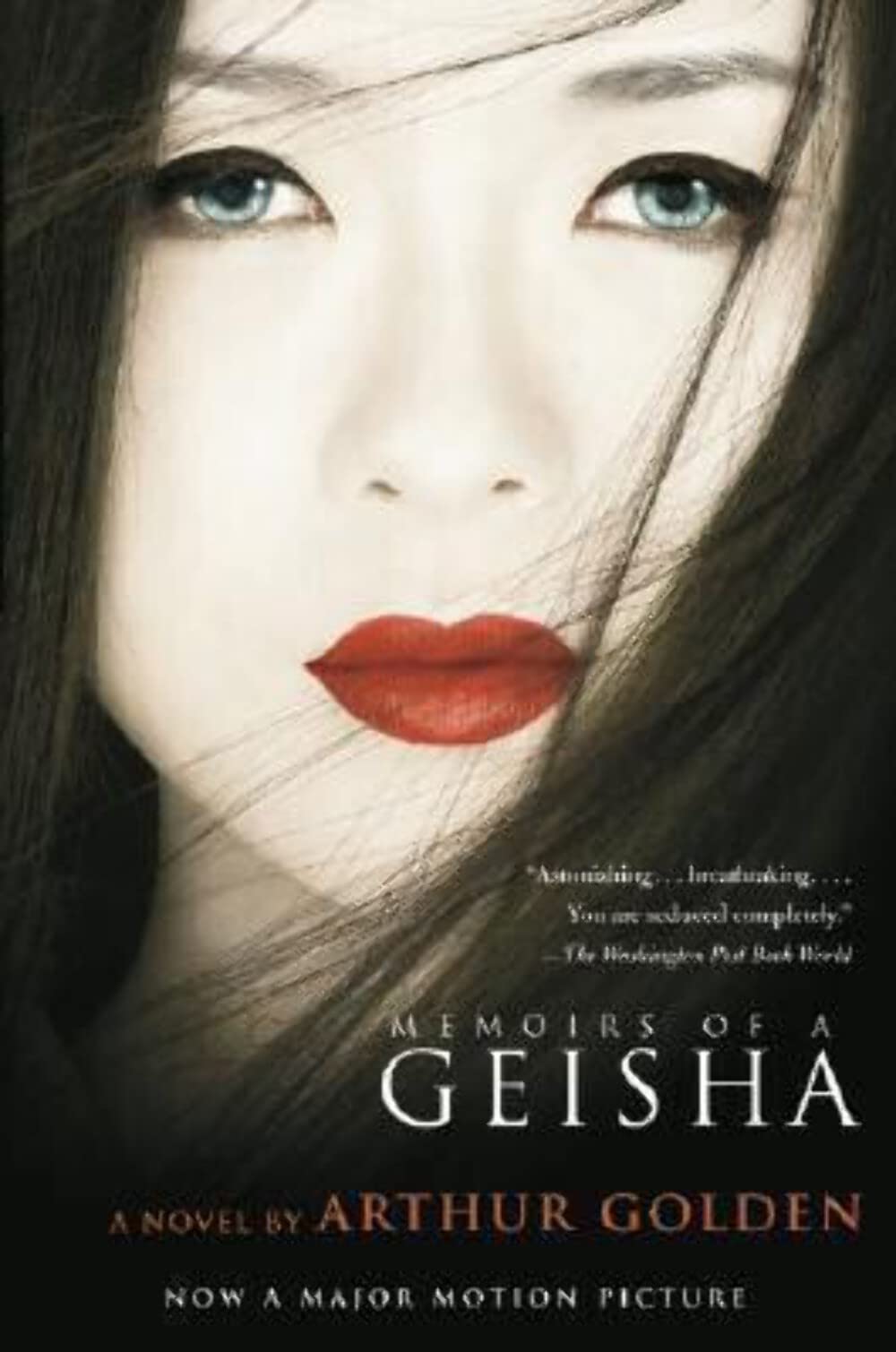
Today, Japanese society holds geisha in high esteem. Loyal clients including businessmen, politicians, and other influential figures pay large sums of money to enjoy their company at an ochaya. However, becoming one of these clients isn’t easy; an existing regular must recommend them to the ochaya.
Some geisha work outside the teahouses and are closer to tourists, offering a tea ceremony or a demonstration of dancing, singing and shamisen. It should be noted that the cost of a geisha depends on the time and services provided.

An Experience to Incorporate into Your Next Incentive Trip to Japan
For meeting planners looking to offer participants a deeper, more refined cultural immersion, geisha experiences can add a memorable and exclusive touch to any incentive program in Japan. Two standout providers offer curated access to these living traditions:
TOKI specializes in authentic luxury Japanese experiences, blending culture, craftsmanship, contemporary design, and gastronomy.
MAIKOYA highly rated on TripAdvisor, focuses on geisha and samurai themed experiences providing rare, respectful encounters with these iconic figures of Japanese heritage.
Both organizations offer group-friendly programs ideal for the MICE segment. Experiencing a geisha performance in your itinerary goes beyond cultural appreciation it creates lasting impressions through history, elegance, and authenticity.










